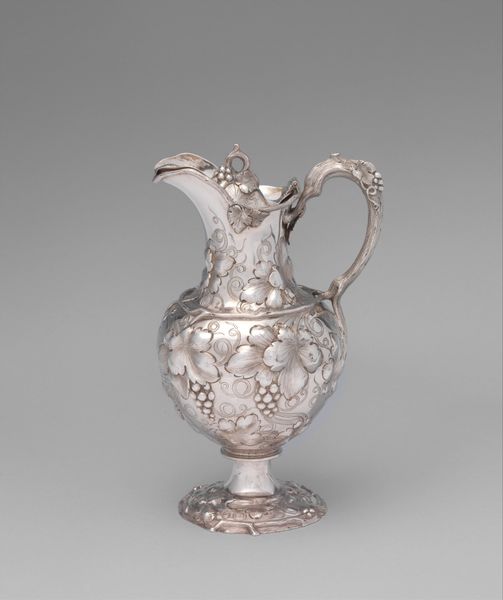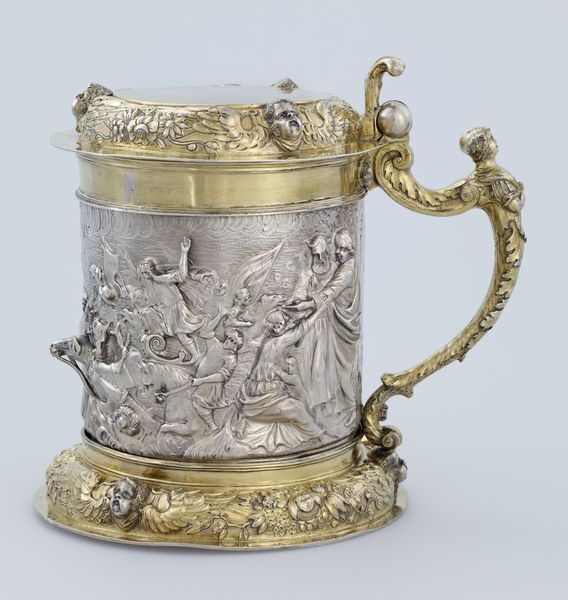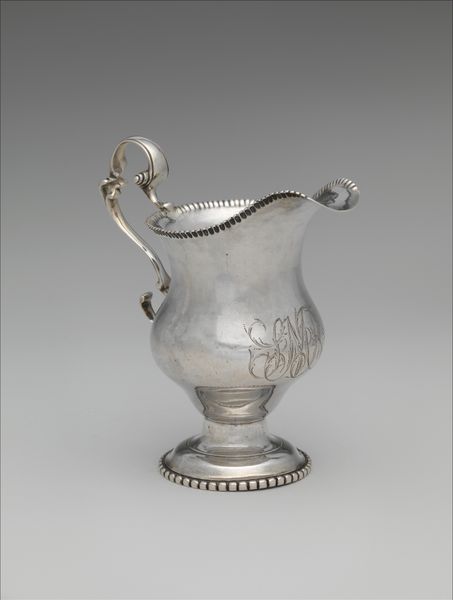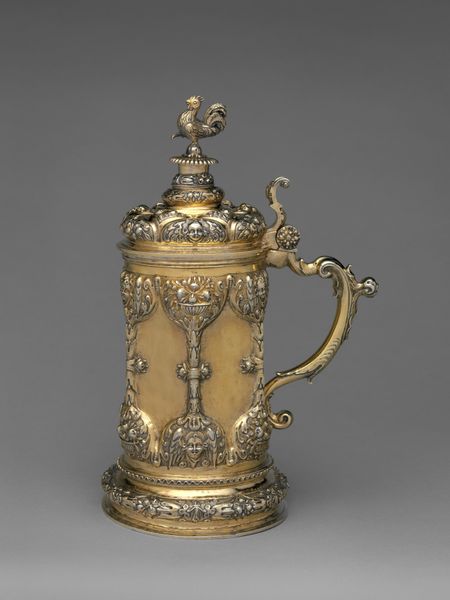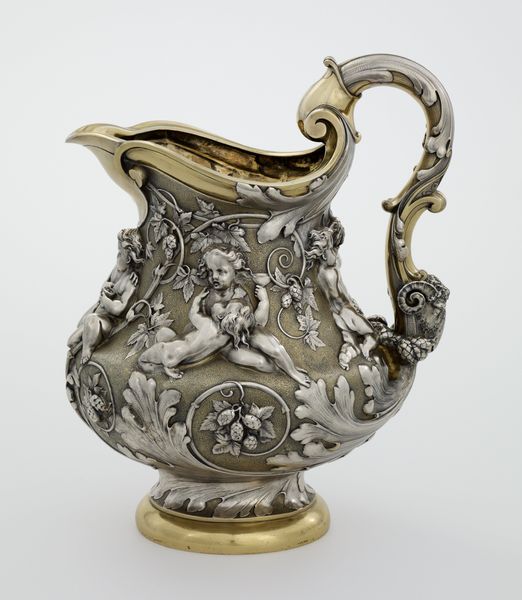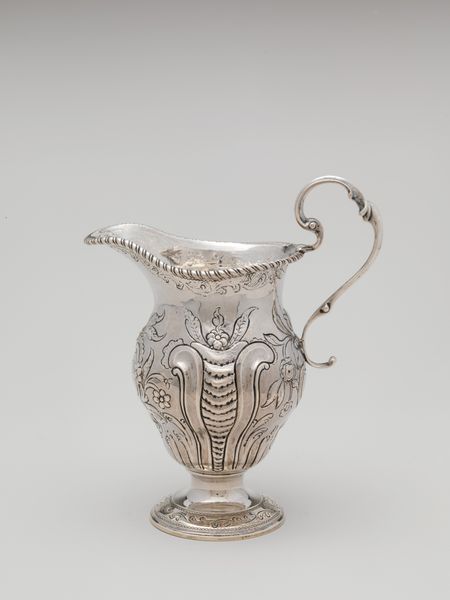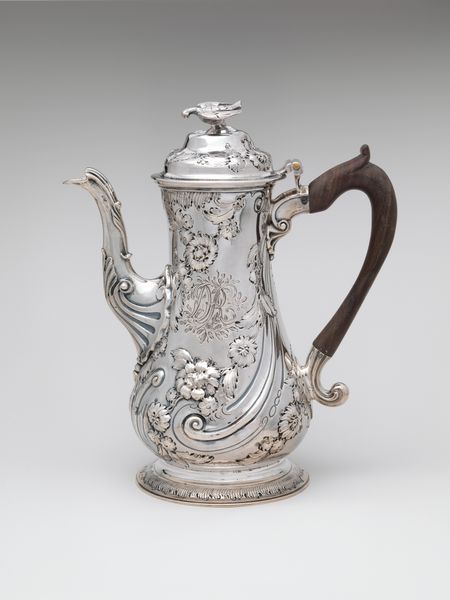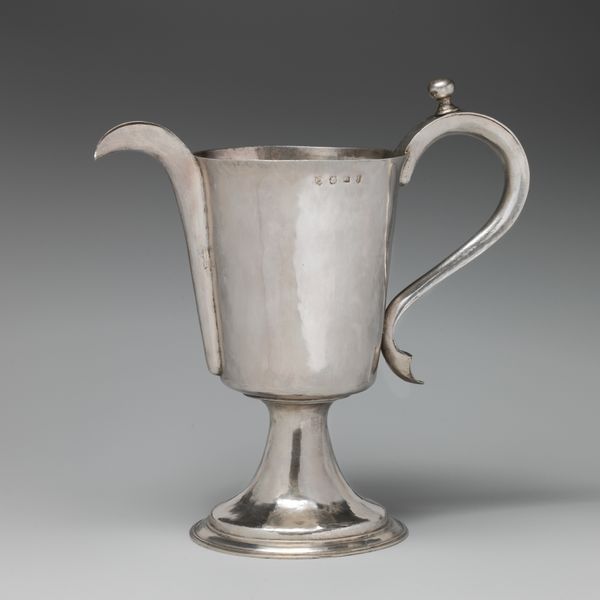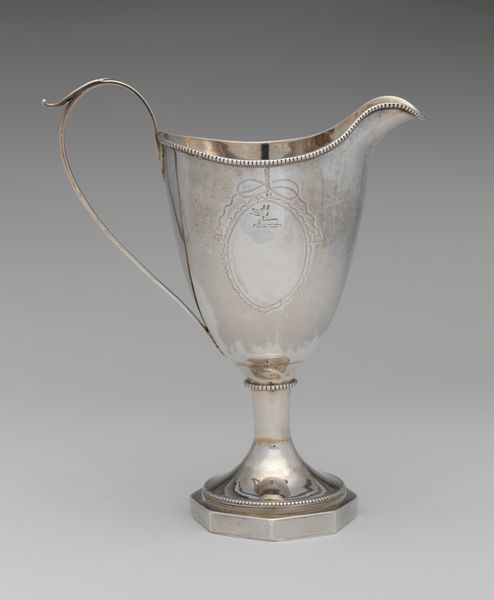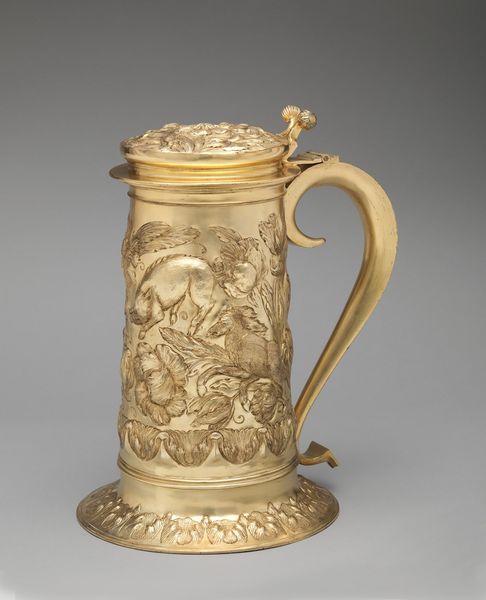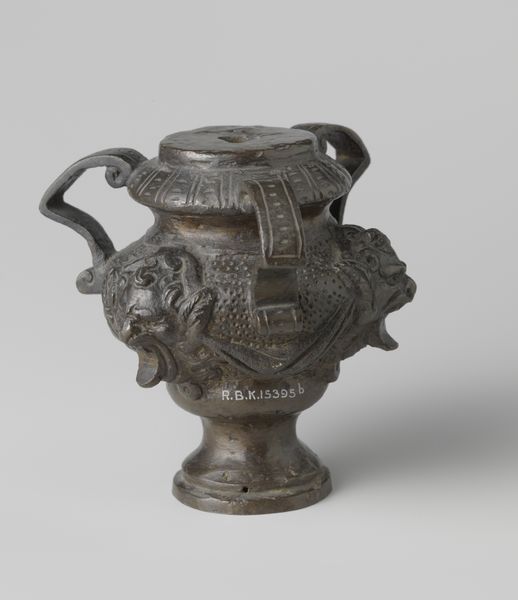
Dimensions: Overall: 9 7/8 × 9 5/8 × 6 in. (25.1 × 24.4 × 15.2 cm)
Copyright: Public Domain
Curator: Look at this elaborate Ewer, crafted in the 19th century by Elkington & Co., now residing here at the Metropolitan Museum of Art. Its baroque style is undeniably captivating. Editor: Intricate, certainly. My eye is immediately drawn to the almost excessive ornamentation – the profusion of floral relief against the metallic sheen reads as particularly evocative. It overwhelms me somewhat; perhaps this signals more about consumption, wealth, and class during its time. Curator: A valid interpretation. However, consider the structural integrity. The eye moves seamlessly from the base, up along the vessel to the spout-like design at the top and around that meticulously detailed dragon handle—the dynamism, wouldn’t you agree, is a hallmark of baroque aesthetics? Note also how the negative space interacts with the ornamentation. Editor: I can acknowledge its dynamic form. Yet I'm compelled to ponder the hands that shaped this, the laborious process of chasing silver, the conditions of the workshop. The pursuit of high art, especially one rendered in such costly materials, often overshadows the maker's real contribution. Is it possible to see such objects detached from considerations of material reality, and who had the luxury of enjoying its beauty? Curator: Fair enough. The materiality informs our understanding. The silversmith’s craft transforms mundane matter into high art, but the end result showcases not the labor so much as the capacity of form to create something far beyond function—the dragon itself evokes mythic power through precise figuration. Editor: Precisely, because we forget the skill required. But even focusing on form alone distances us from comprehending what goes into art’s function within culture. The Ewer has ceased to become simply an article; it is really an aesthetic argument encoded in silver that also embodies very clear, hierarchical social dynamics related to the labor required to obtain the status reflected in ownership. Curator: So we’re speaking, in essence, about transformation through a series of mediations: from raw material, to shaped vessel, to potent symbol. That reminds us that artworks become objects through design. Editor: Yes! Appreciating that shift provides me a deeper level of thought that simply looking at it aesthetically fails to realize!
Comments
No comments
Be the first to comment and join the conversation on the ultimate creative platform.
